20+ SAMPLE Client Information Forms
-
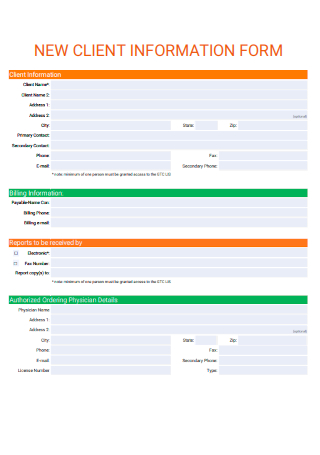
New Client Information Form
download now -
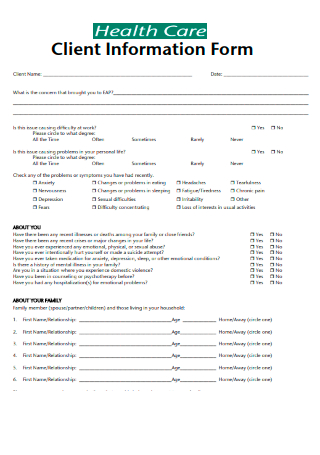
Health Care New Client Information Form
download now -
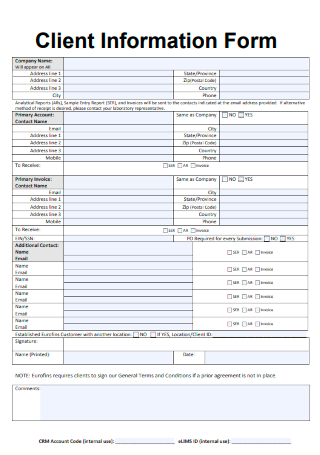
Sample Client Information Form
download now -
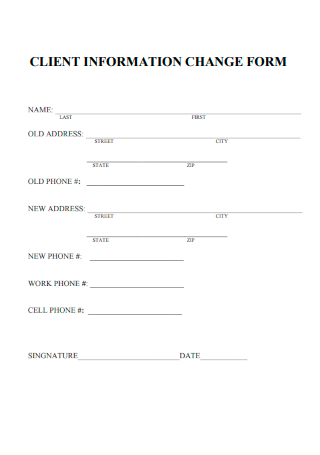
Client Information Change Form
download now -
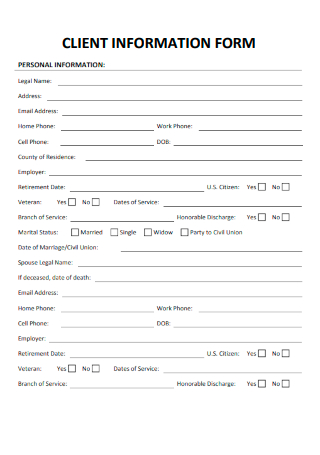
Basic Client Information Form
download now -
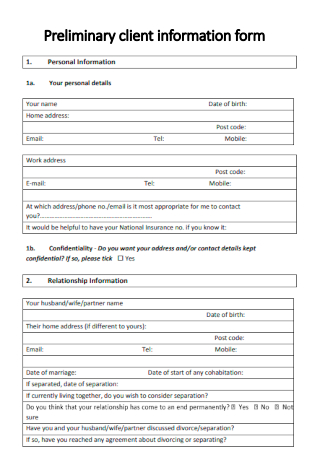
Preliminary Client Information Form
download now -
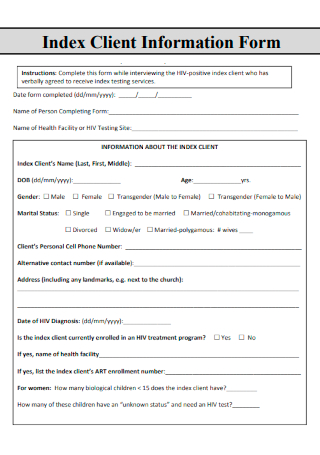
Index Client Information Form
download now -
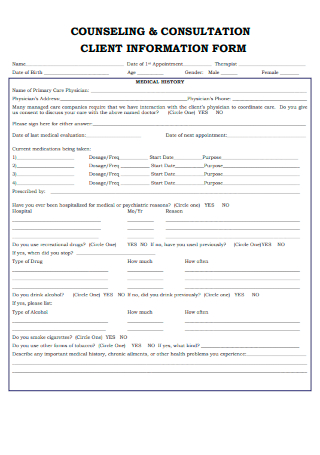
Counseling and Consultation Client Information Form
download now -

Patient & Client Information Form
download now -
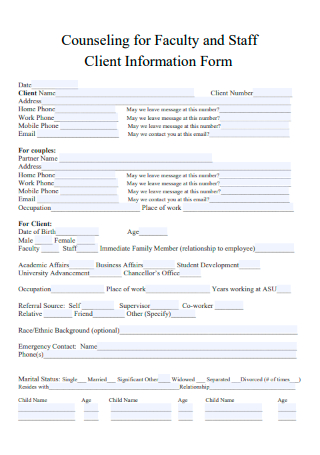
Counseling for Faculty and Staff Client Information Form
download now -
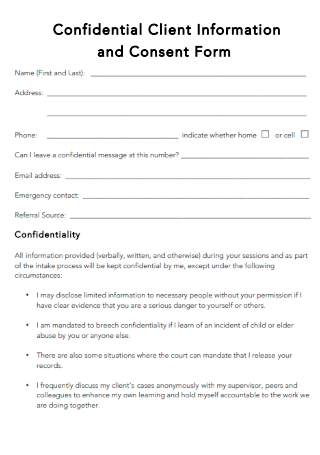
Confidential Client Information and Consent Form
download now -
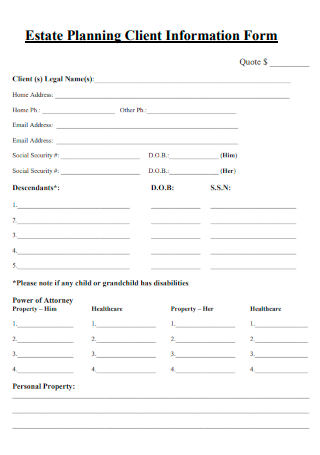
Estate Planning Client Information Form
download now -
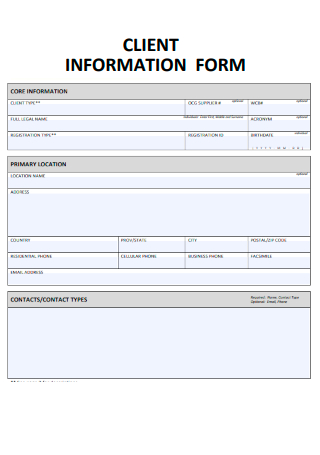
Formal Client Information Form
download now -

Trust Client Information Form
download now -
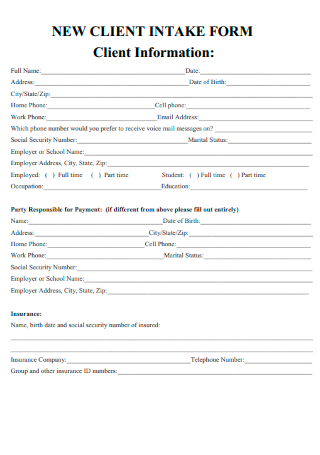
New Client Intake Information Form
download now -
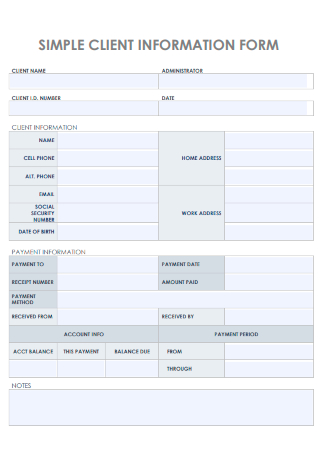
Simple Client Information Form
download now -
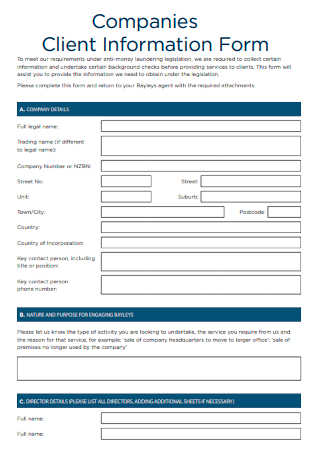
Companies Client Information Form
download now -
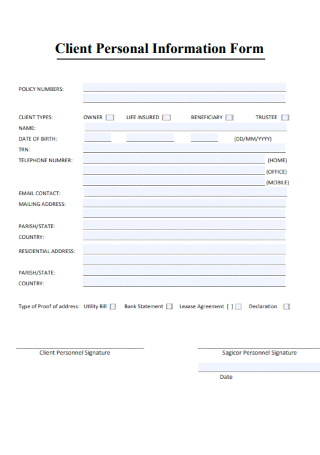
Client Personal Information Form
download now -
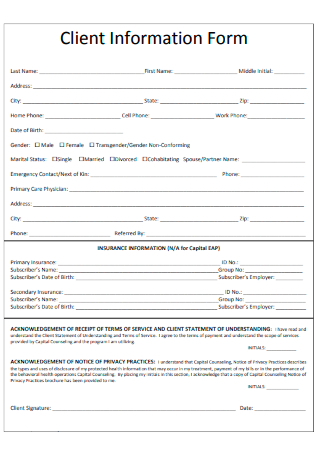
Printable Client Information Form
download now -
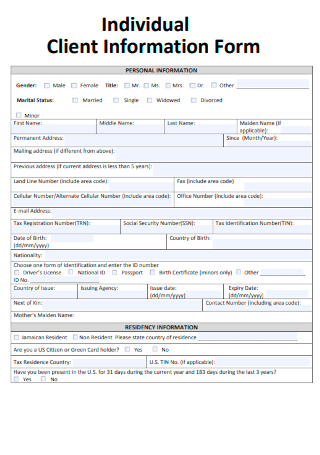
Individual Client Information Form
download now -
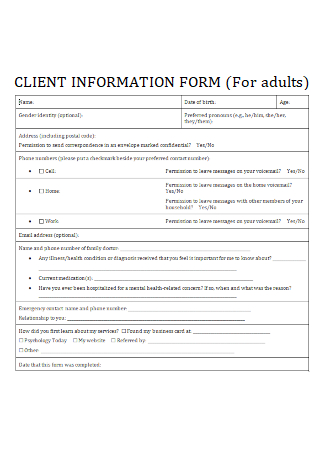
Client Information Form for Adults
download now
FREE Client Information Form s to Download
20+ SAMPLE Client Information Forms
What Is a Client Information Form?
Why Is Client Information Important?
Tips for Studying and Handling Clients
How to Create a Client Information Form
FAQs
What is a client information form?
What is the purpose of a client information sheet?
How do you write client details?
What Is a Client Information Form?
A client information form is a basic form or document that contains relevant information pertaining to a particular client. The information form can be applicable in a number of industries and its content may also vary depending on the type of industry.
According to an online article by Insightly, there are four primary types of client or customer data. These are demographic data, interaction data, behavioral data, and attitudinal data.
Why Is Client Information Important?
Client information forms or sheets can be useful in a lot of different industries. The documentation of client information and history is especially applicable in retail, real estate, and banking sectors. The following examples are just some major reasons why client information is important.
Tips for Studying and Handling Clients
Client management and customer service are not the easiest of jobs. Clients come in all shapes and sizes. There are pleasant and agreeable ones, but there are also times when you cannot avoid offensive or difficult customers. But if your goal is to serve clients better, you need to acknowledge the reality that not all client relationships and transactions will be simple nor easy. The following examples are some helpful tips on analyzing clients and dealing with customers.
How to Create a Client Information Form
To create a client information form, you cannot just go into it without the right preparation. It requires careful planning as well. And if you are looking for quick and convenient templates to use as a reference or guide, simply browse and choose one from the selection above. Once you have selected a sample form, follow the basic step-by-step guide below.
Step 1: Decide on a Format
Before inputting any items on your client information form, you first need to establish the format of your document. An information form or sheet is usually condensed or compacted. Its length will depend on your needs and objectives. A typical client information form is no more than a page or two. But it can exceed a few pages, especially if it is detailed and comprehensive. The important thing to keep in mind is to remain consistent throughout the entire form. Don’t neglect the text, size, and spacing of your document too. If you are looking for predesigned templates or format ideas, you can save more time by using the editable forms above instead.
Step 2: Cover Basic Client Information
Once you have established a consistent format, you can then proceed to filling in the key elements of your form. You want to retain as much information as you can when it comes to your clients. Of course, confidentiality and privacy still very much apply. Data protection is crucial and should not be taken lightly. The content or elements of your form may also vary because it would highly depend on the individual needs and objectives for gathering data in the first place. For instance, if your goal is to collect client information to improve a particular product, then you might want to include a section in your form for clients to voice their opinion and share their feedback.
Step 3: Include Client History
An important section in a client information form is the client’s history. Whatever the purpose is for recording information, including the client’s history of transactions with you is crucial. Whether it is a clinical information form, corporate account information form, or even a regular client information sheet, it will be a much more comprehensive record if you keep an organized and chronological account of all your client’s business affairs and transactions. Although, client history is not always necessary and it may sometimes be omitted in other client information forms. Again, it would depend on individual or organizational needs.
Step 4: Keep It Organized
Once you have arranged all the information and items on your form, the last step is to ensure that it is organized and comprehensible. Do not neglect the need to review and proofread. When you are crafting a form, especially a standard form, you want to double check each item or entry on the form. If the client information form is to be replicated or reproduced, then all the more it should be reviewed. Note that it is not just the content that ought to be reviewed, but even the format. The margins, spacing, and the fine details all matter. Lastly, make sure that the text is legible and comprehensible enough as well.
FAQs
What is a client information form?
A client information form is a basic form that contains key data about a particular client. This data can be stored, recorded, and kept on file for various purposes.
What is the purpose of a client information sheet?
A client information sheet can serve several purposes, depending on the needs and objectives of an organization. Usually, client information sheets are kept on record in case the need to reach out to them arises. In other cases, the information can be used for market study and analysis.
How do you write client details?
To write down a client’s details, try to always approach it with objectivity and a sense of responsibility. In other words, you should not only input accurate information but must also protect the client’s privacy and have their best interests in mind. Client details such as contact information, transaction history and other sensitive data should be handled with responsibility at all times.
A client information form is a standard but essential document. Browse the extensive library of sample templates above, select a ready-made template that suits your needs and start creating your own client information form now!
